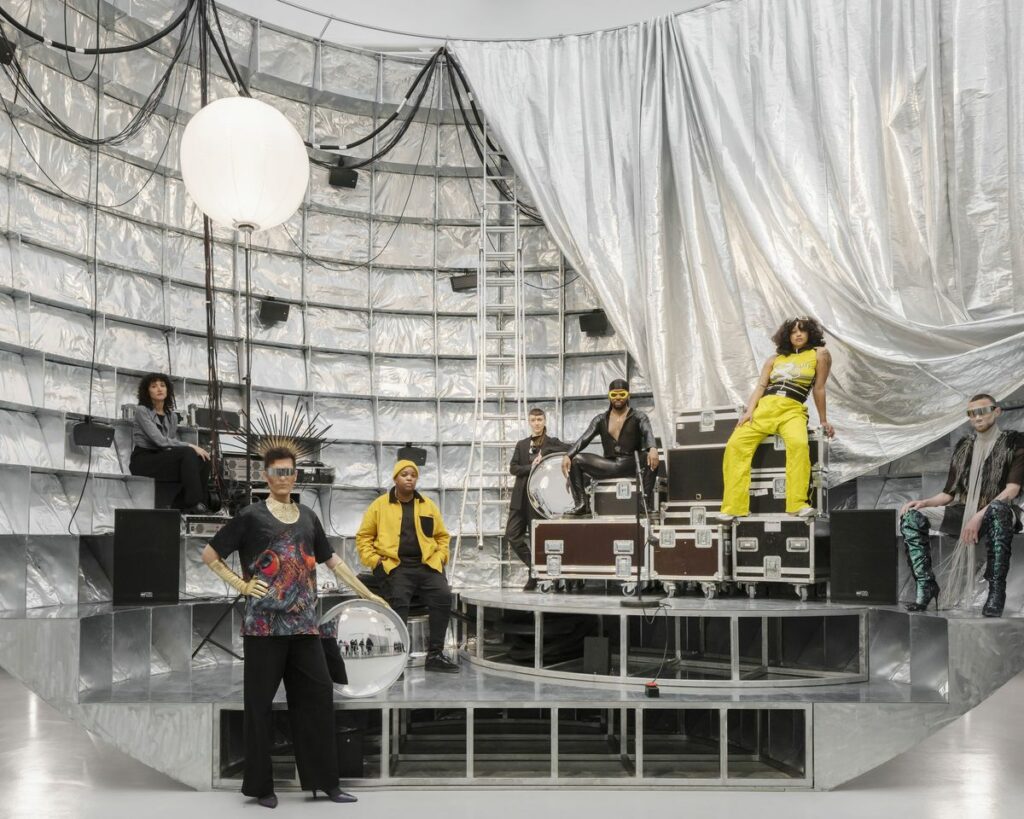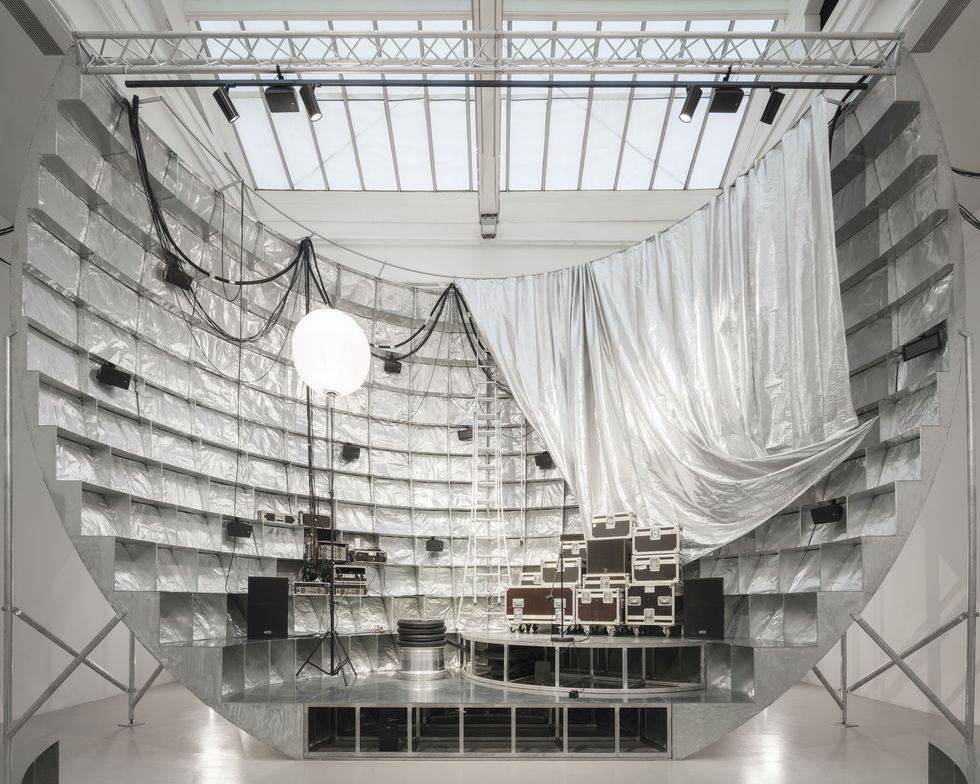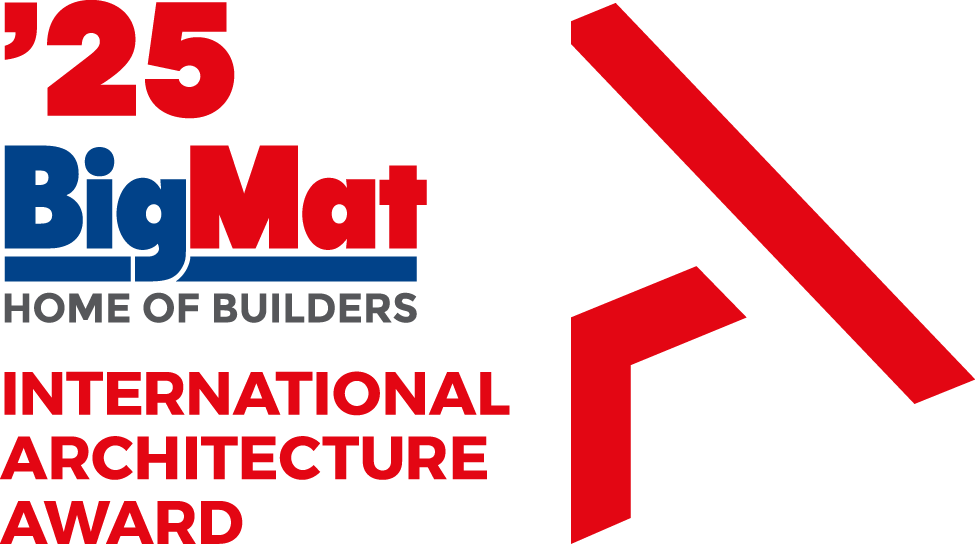The two partners of the Parisian agency Muoto, Yves Moreau and Gilles Delalex, Jury Member of the BigMat International Architecture Award 2023, were the curators of the French Pavilion for the 18th Venice Architecture Biennale.

A Theater to Awaken the Desire for Utopia. Daring Architecture
The Ball Theater is a hemispherical theater built inside the French Pavilion, essentially a pavilion within a pavilion. It aligns with the overarching theme of the Architecture Biennale, „The Laboratory of the Future,“ defined by Lesley Lokko, as theater is fundamentally a laboratory of identities, places, and imaginations. It serves as a device that allows one to project into another world and into the future. The curators thus bet on constructed architecture capable of offering visitors an experience that is spatial, aesthetic, and auditory. According to Lesley Lokko, architecture’s role is no longer to represent or be represented as an image. It must be real, tangible, and concrete to become the place where life, society, and the future are experienced! Architecture should no longer be avoided; it should be made and experienced. It should not be retrospective, as most exhibitions are, but prospective. We must write the future.


Awakening Our Desires for Utopia
The installation is designed to awaken our desires for utopia. With its globe-like shape, the theater immediately evokes the architectures of the revolution or Russian constructivists. Its ideal and continuous contour makes it a utopian figure representing a small world, this Earth we now consciously share, with its meridians and parallels. The shape of the theater encourages us to project ourselves once again, beyond crises. In a context of urgency, austerity, and climate anxiety, this theater delivers a message: let’s awaken the utopia within us! Let’s allow ourselves moments of discovery and euphoria.
Invoking the Imagination of Celebration
The theater’s shape can be interpreted as a globe but also as a disco ball, a kitsch icon of an era when celebration was still possible. This festive imagination suggests a new approach to current crises, focusing not on urgency but on the possibility of imagining other places. To stimulate this desire for elsewhere, the theater’s life alternates, during the Architecture Biennale, between moments of contemplative immersion in a sound world composed of strange and distant voices, and periods of intense activity taking the form of „balls,“ spectacular residencies where artists, researchers, and students intersect.

An Experience to Raise Questions
The installation challenges visitors by placing them at the center of a stage that calls for risk-taking, speaking, gesturing, and intervening. It is not a theater of illusion characterized by the face-to-face between actors and spectators but a scenic device designed for experimentation. This stage produces an experience that questions. It does not provide so many answers as it raises questions. What is the origin of this hemisphere? Who inhabits it? What is its purpose? How did it get here? What do the fragments of voices, whispers, and radio interferences emanating from its speakers tell us? Did it just land or is it about to take off? These are the questions we ask ourselves in an uncertain world: should we land or take off? Should we get closer to things, create new collectives, erase distances and distinctions, or conversely, rise and take distance? How to choose? How to reinvent our relationship to this world in search of the future? And pose the ecological question, fundamentally, through architecture, not against or despite it?


Scenography: A Sound Odyssey
The Makeshift Ark
The theater’s architecture is halfway between structure and decor. It embraces this scenographic dimension to host, like a real theater, a stage, a troupe, and an audience. Its image remains ambivalent, crossing as contradictory images as those of a futuristic capsule and a primitive hut. The details are meticulous while the assemblies, supports, and cables remain visible. The object is both precarious and sophisticated. It evokes the imagination of Noah’s Ark, presenting itself as a makeshift vessel that has landed here. Those who built it seemingly wanted to escape a world in which they no longer found their place. They chose a light and temporary structure, equipped, like an echo and resonance chamber, with rudimentary devices to listen, capture, emit sounds, and attempt to imagine new rituals: microphones, speakers, projectors.
A Silver Stage
At the entrance of the pavilion, visitors first discover the exterior face of the hemisphere, covered with a silver aluminum surface. The structure seems immense. One wonders how it got there. By circling it, visitors discover a hollow interior face, a steel structure, plywood bleachers, a silver textile curtain, and a stage with a lit microphone. The whole is surmounted by a triangulated beam carrying some projectors. The virtual circle of the sphere is recomposed by a stepladder and two bleachers. The lower part of the stage can be configured in different ways, with a low, circular mobile podium allowing the audience to sit and access the center, as well as a higher platform for invited artists.

